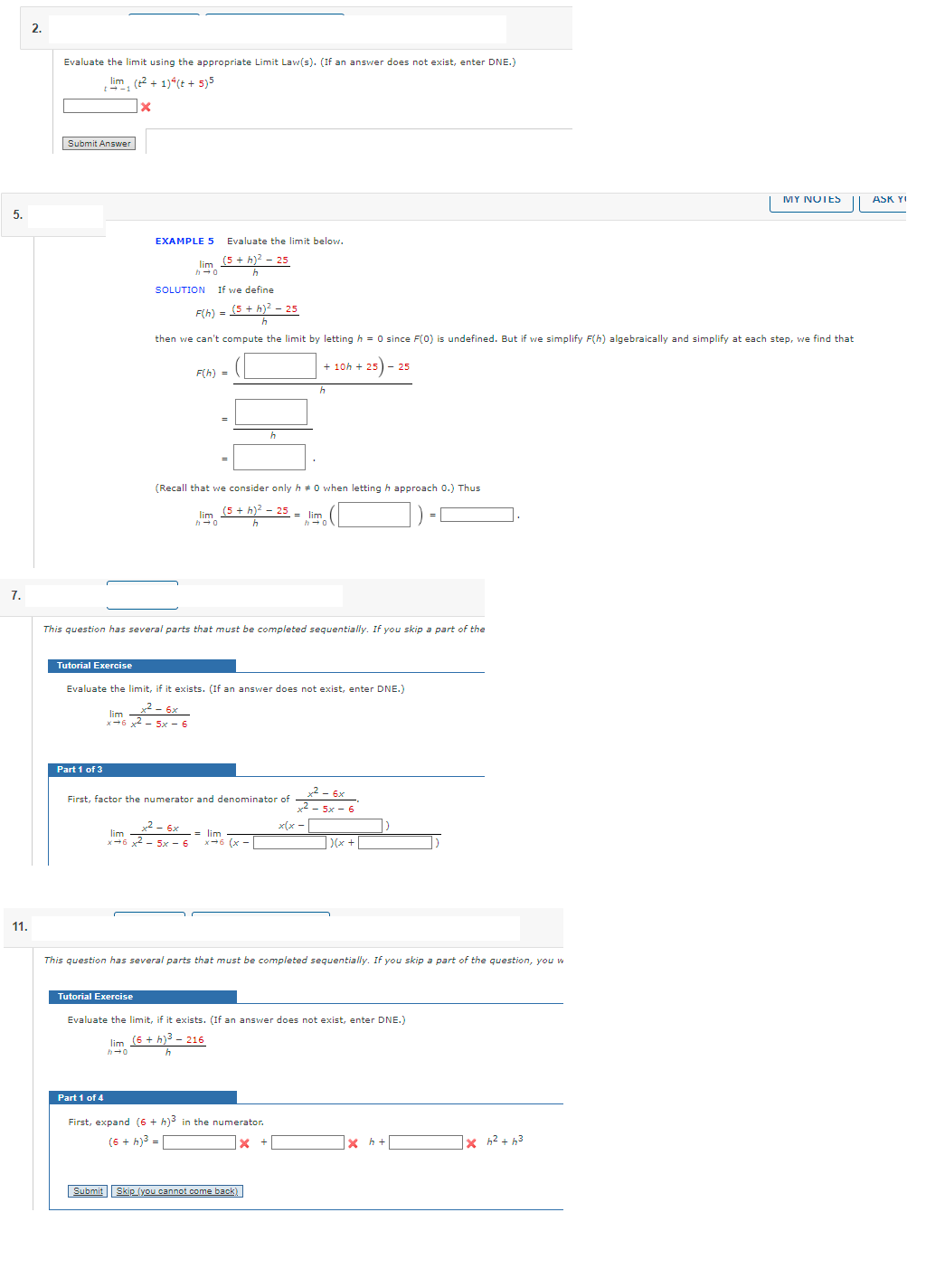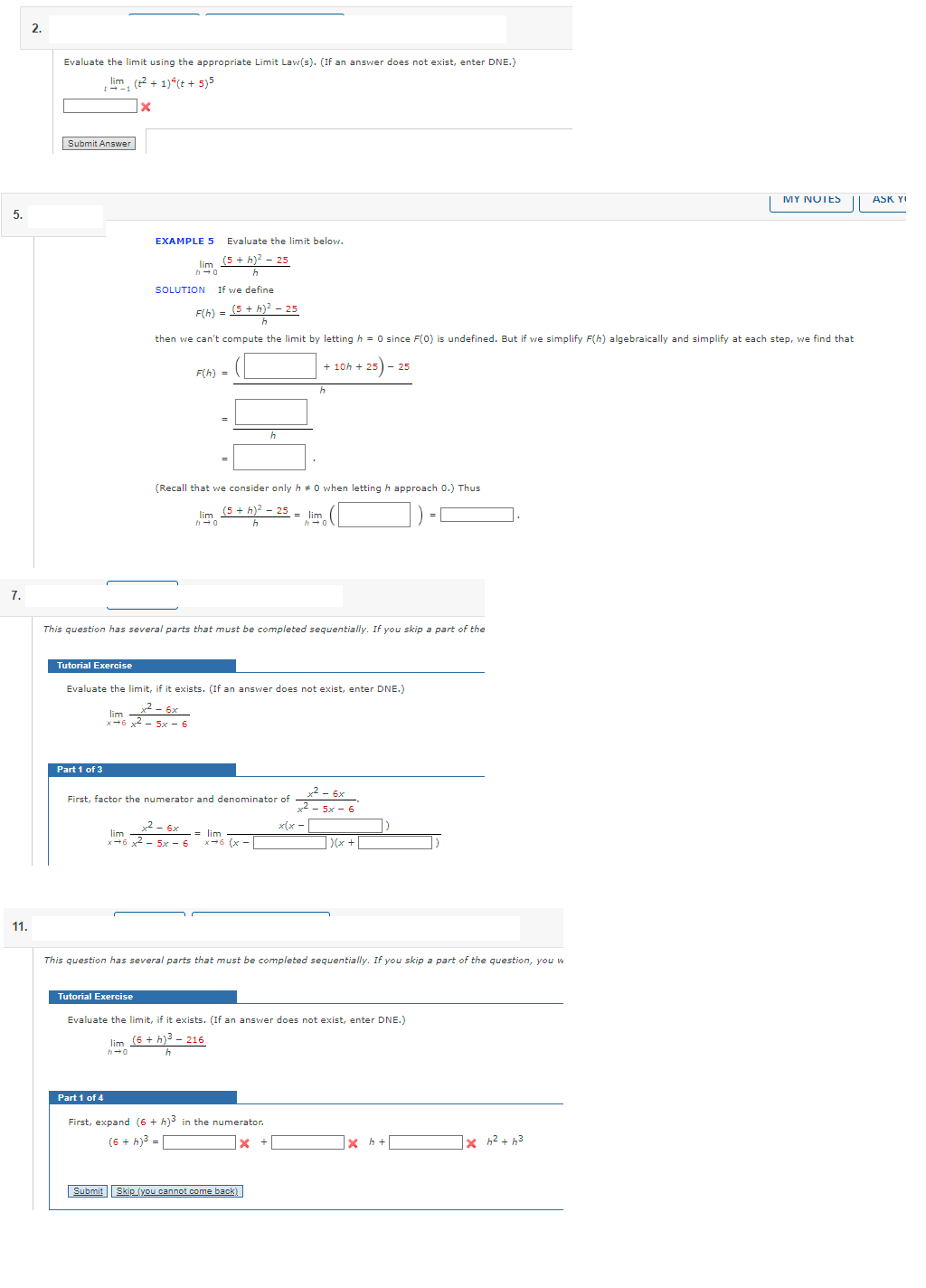Answered step by step
Verified Expert Solution
Question
1 Approved Answer
2. Evaluate the limit using the appropriate Limit Law(s). (If an answer does not exist, enter DNE.) , lim, (12 + 1)4(t + 5)5 1x


Step by Step Solution
There are 3 Steps involved in it
Step: 1

Get Instant Access to Expert-Tailored Solutions
See step-by-step solutions with expert insights and AI powered tools for academic success
Step: 2

Step: 3

Ace Your Homework with AI
Get the answers you need in no time with our AI-driven, step-by-step assistance
Get Started


